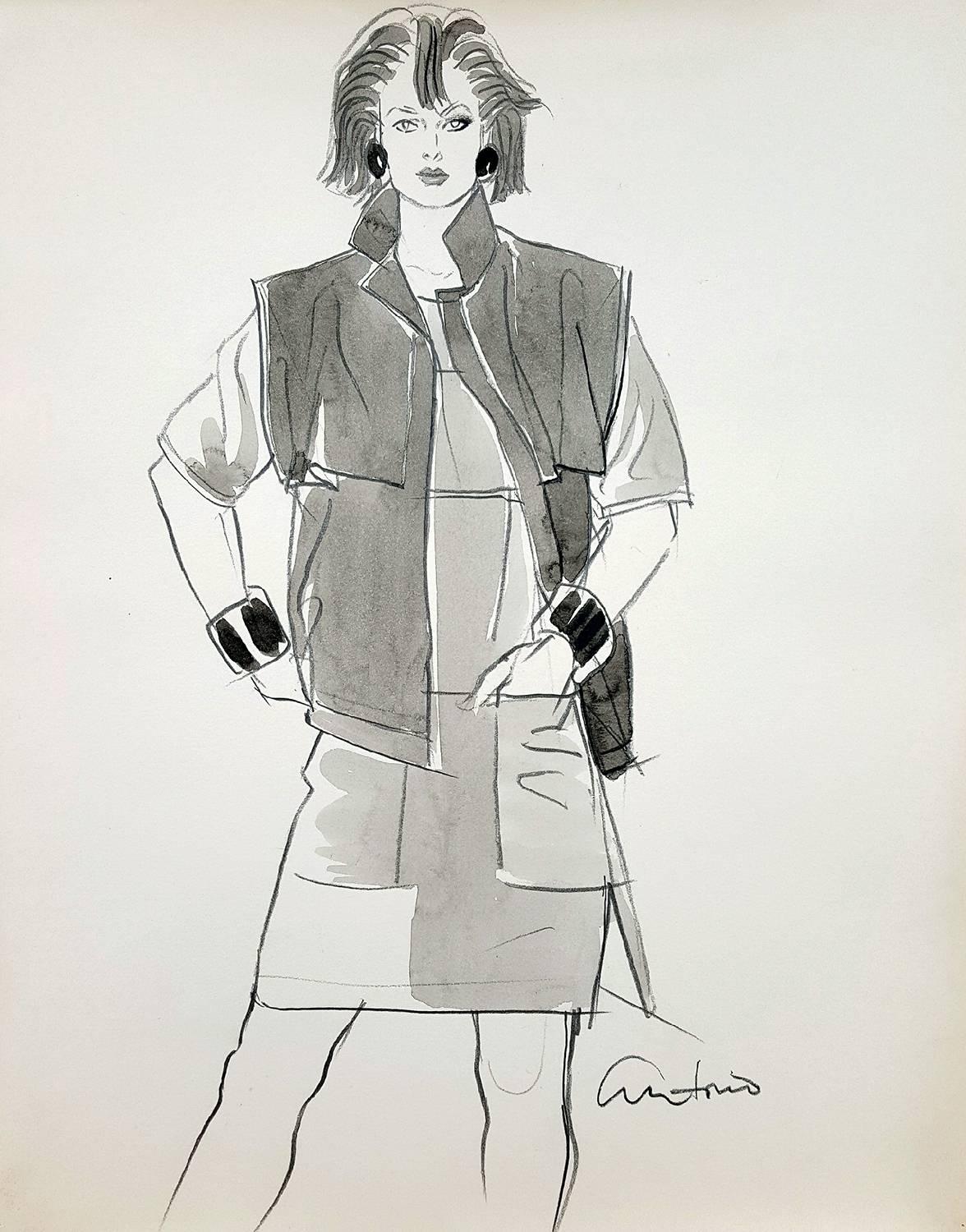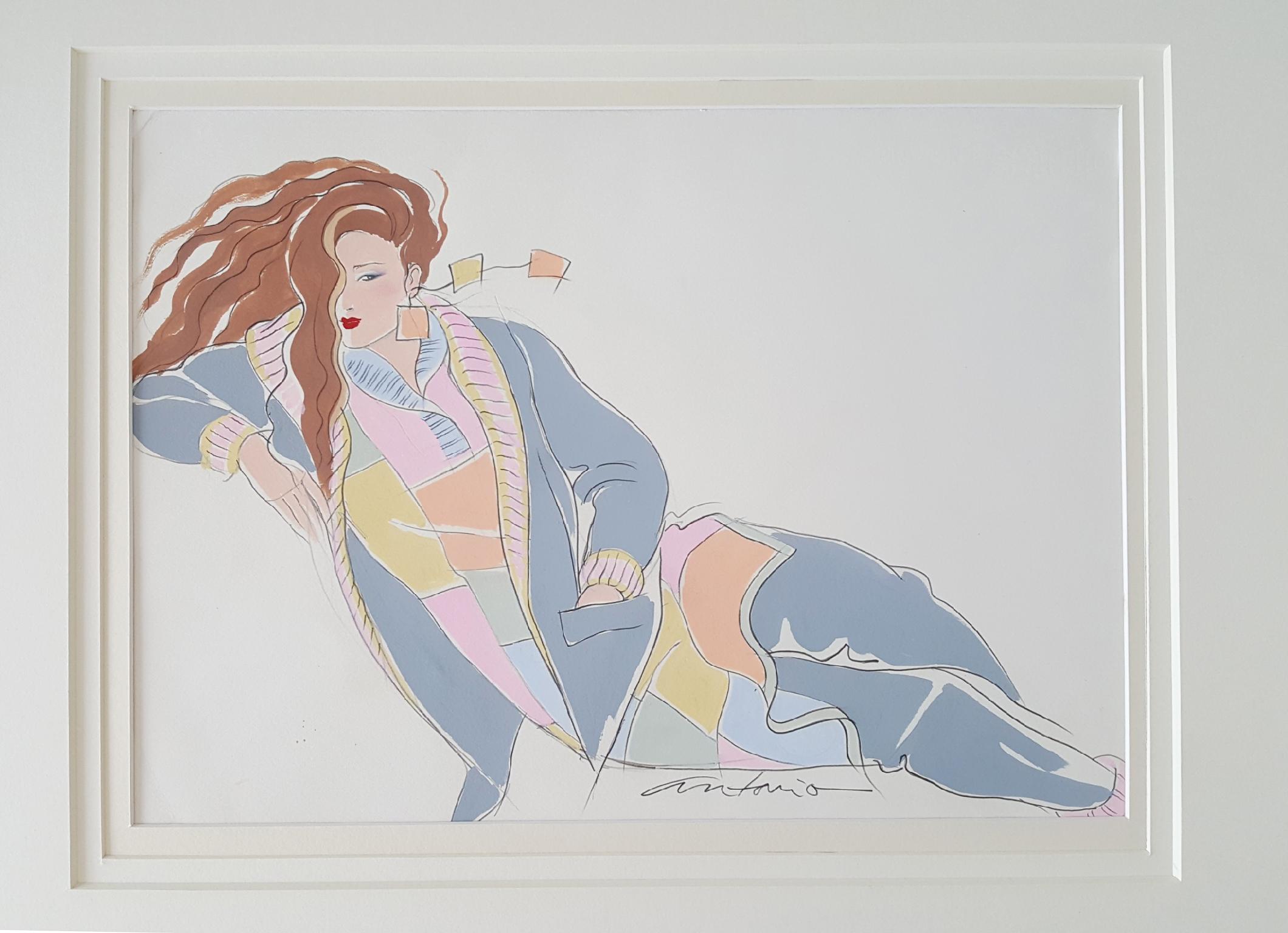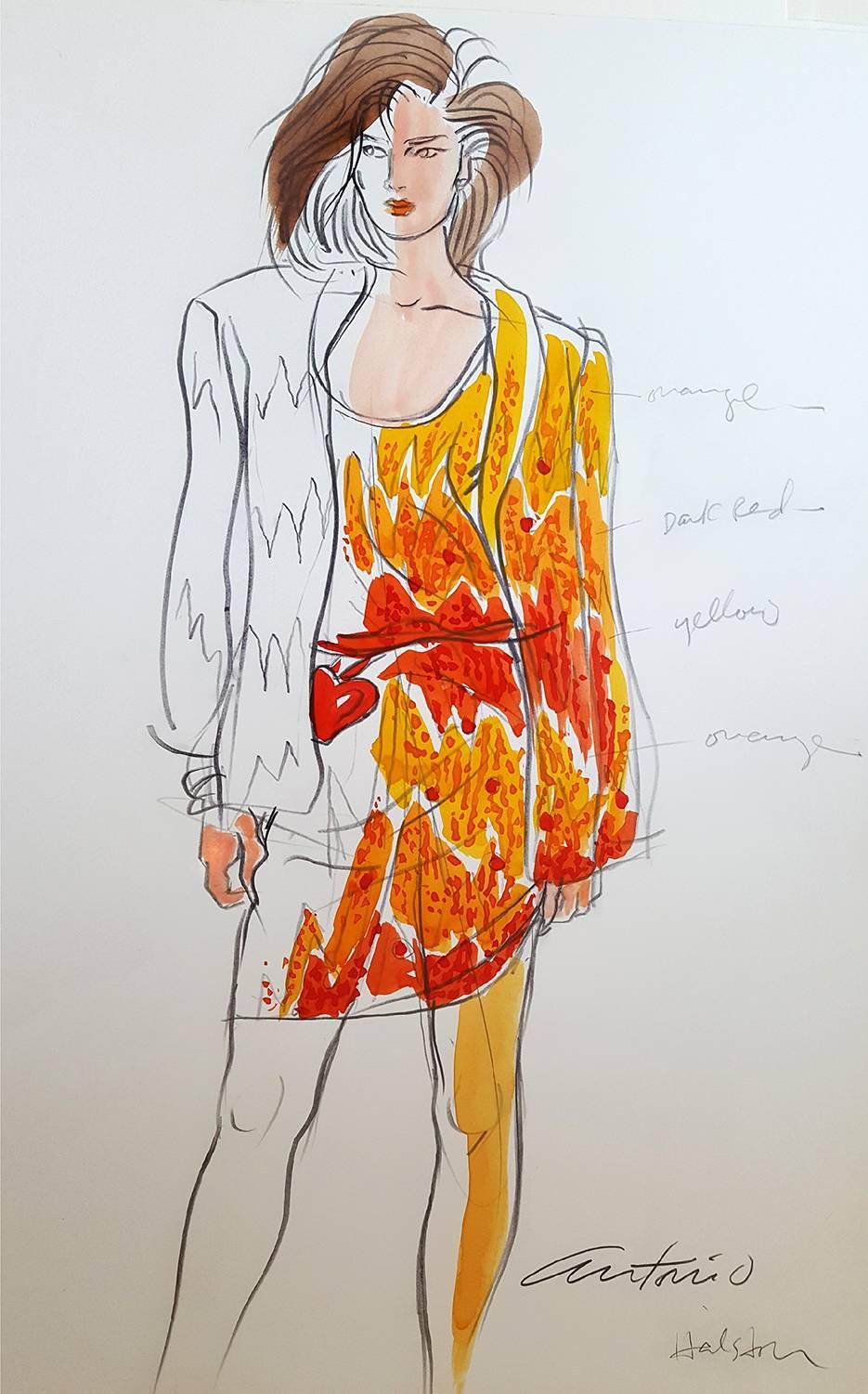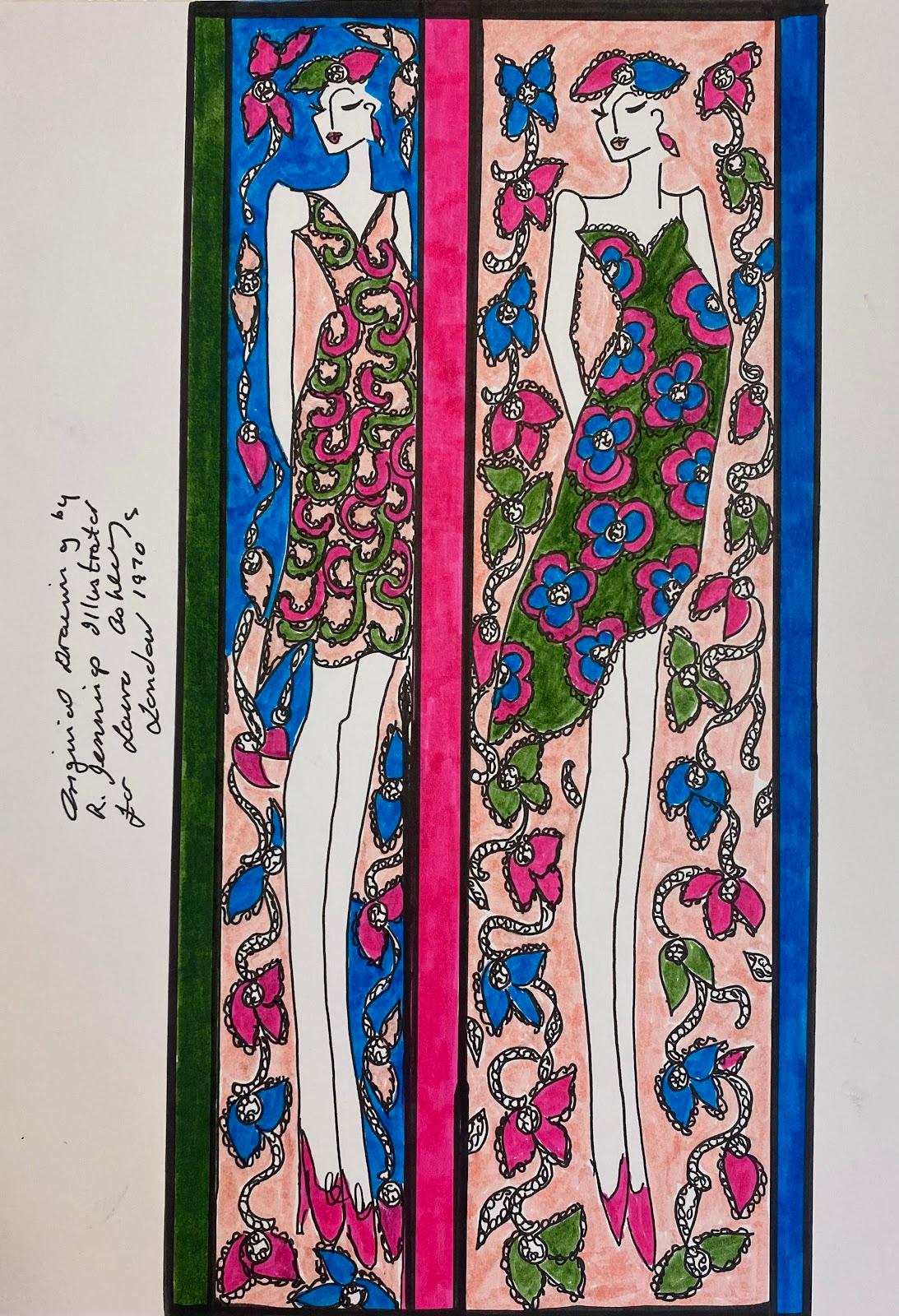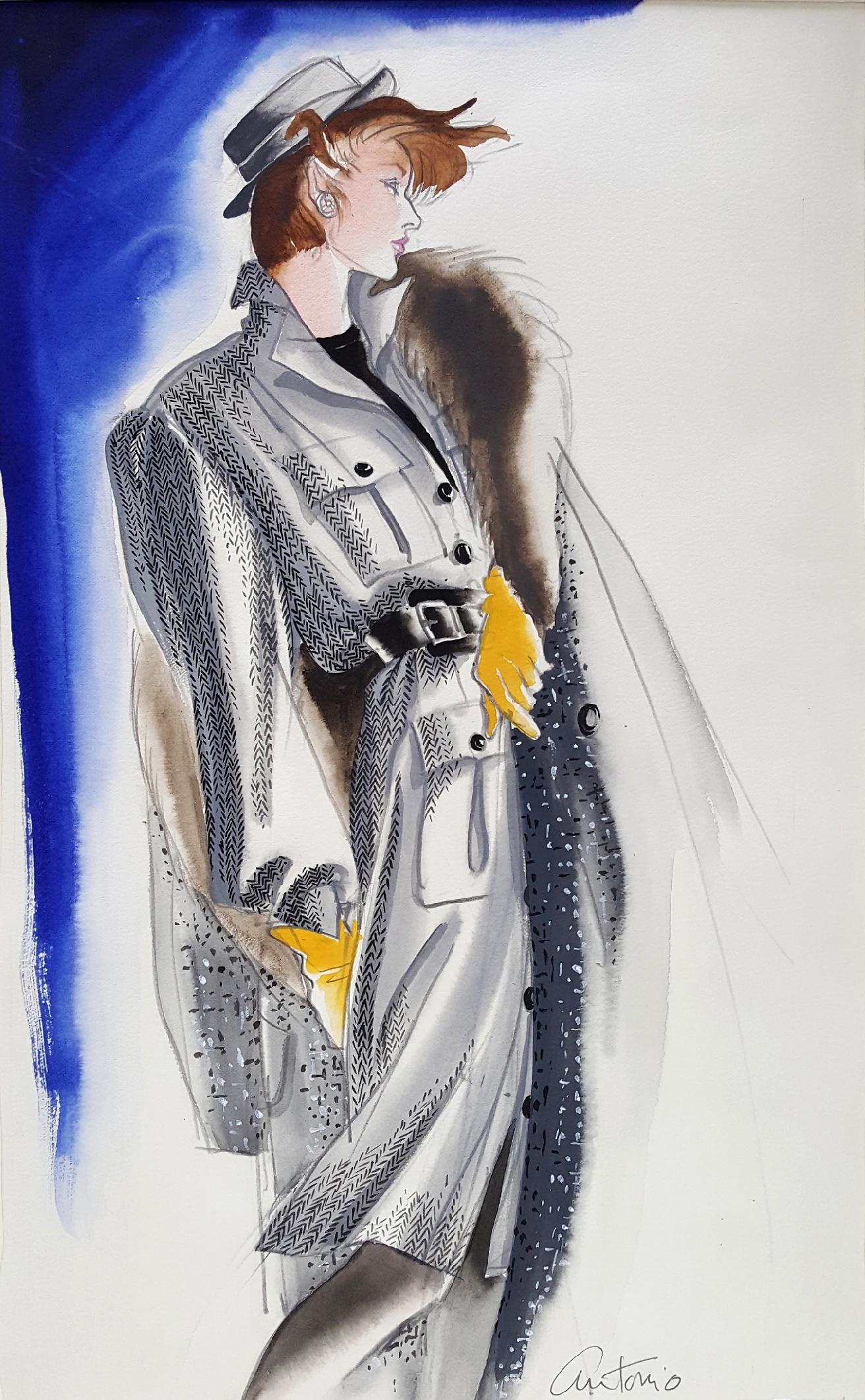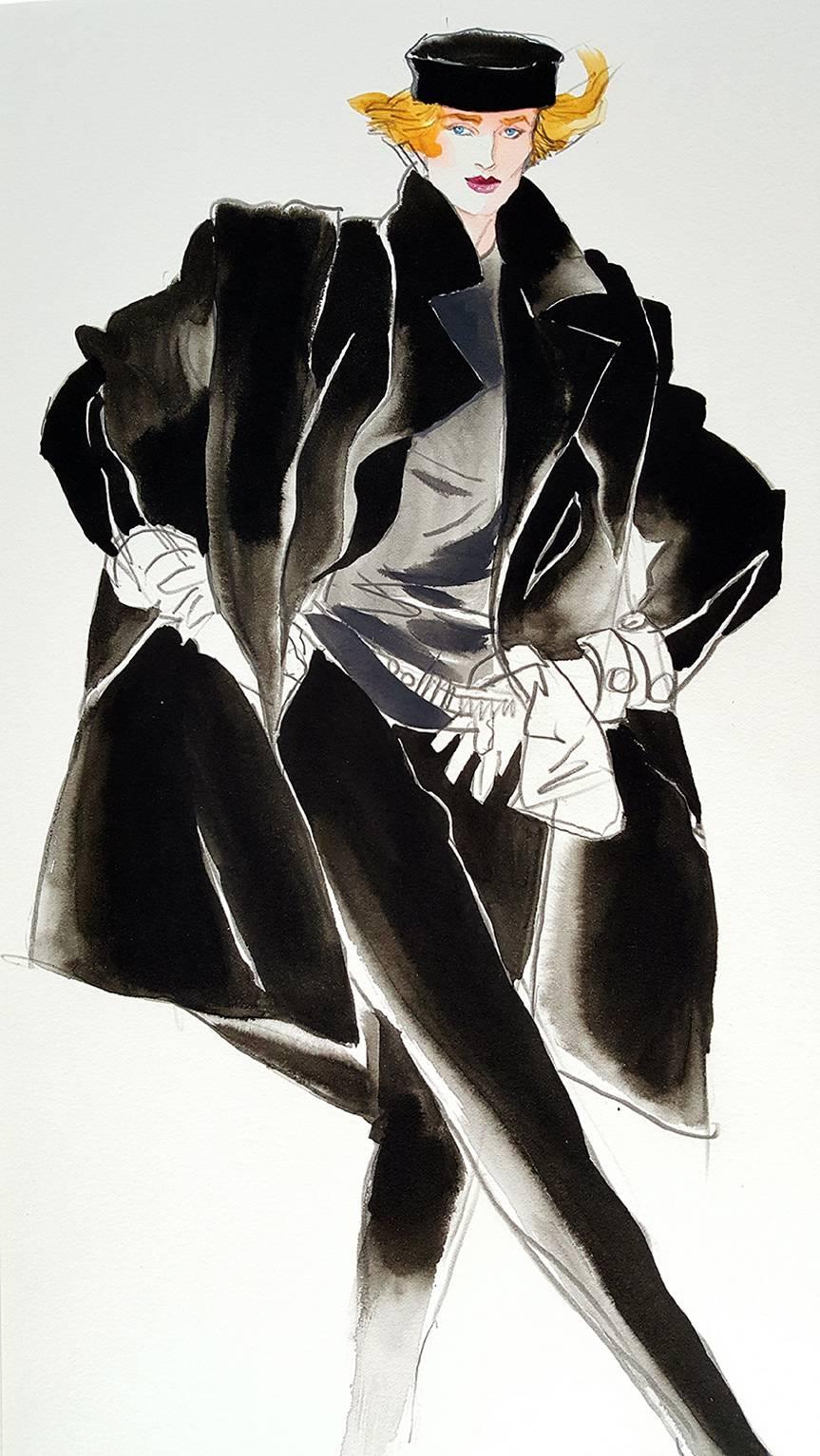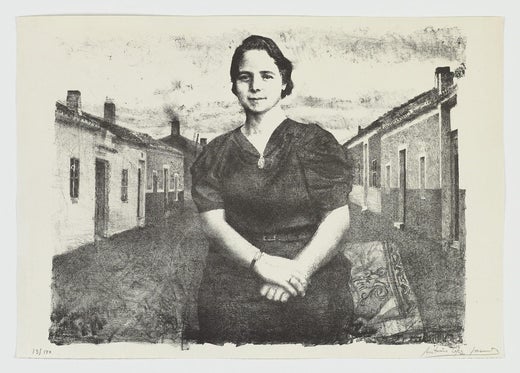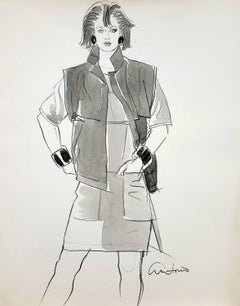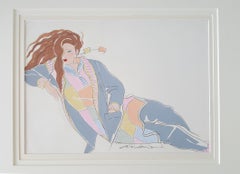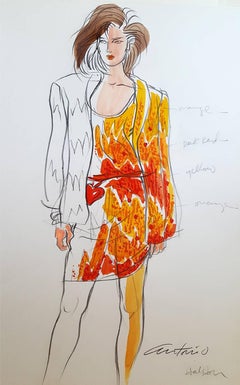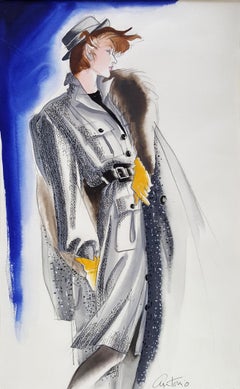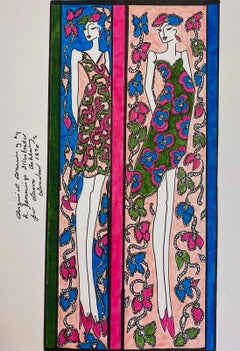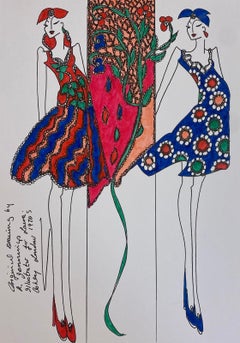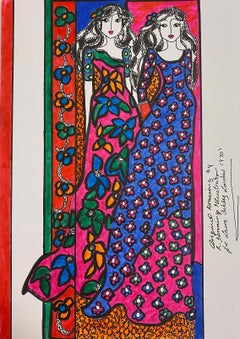Items Similar to Five Fashion Models Wearing Hoodies Vogue Patterns 1970s Fashion - Puerto Rican
Video Loading
Want more images or videos?
Request additional images or videos from the seller
1 of 23
Antonio LopezFive Fashion Models Wearing Hoodies Vogue Patterns 1970s Fashion - Puerto Rican1971
1971
$22,000
£16,629.27
€19,109.99
CA$30,634.86
A$34,080.03
CHF 17,865.18
MX$416,449.67
NOK 227,490.77
SEK 214,151.09
DKK 142,648.84
Shipping
Retrieving quote...The 1stDibs Promise:
Authenticity Guarantee,
Money-Back Guarantee,
24-Hour Cancellation
About the Item
Famed Puerto Rican Fashion Illustrator Antonio Lopez creates an oversized illustration for Vogue Patterns Magazine 1971. He uses a variety of media which includes watercolor, ink, colored paper and monochromatic acetates. Unsigned. The work comes in two parts. It was initially framed in period metal frames but we are in the process of framing it with ultra high-end framing - as on piece with both works butted together.
The video is coming up light. Use the still images as a reference for color.
The work is frame in an ultra-high-end frame with Optium Museum Acrylic.
In person, the work looks better.
Born in Puerto Rico, Lopez first came to the attention of the fashion world in the 1960s with his bold and dynamic illustrations, which he created with art director Juan Ramos. "I like to work with a model, I find the drawings more spirited, more believable," Lopez told Vogue, who described him as "one of fashion's most colorful characters." The magazine also credited the artist with discovering models like Jerry Hall. "Antonio's girls," as they were sometimes called, were all unconventional beauties. Lopez and Ramos championed women of color, like Pat Cleveland, Carol LaBrie, Alva Chinn, and Amina Warsuma.
Source: Vogue
- Creator:Antonio Lopez (1943 - 1987, Puerto Rican)
- Creation Year:1971
- Dimensions:Height: 22 in (55.88 cm)Width: 34 in (86.36 cm)Depth: 1 in (2.54 cm)
- Medium:
- Movement & Style:
- Period:
- Condition:There is a small one-inch and half tare to the paper center on the second illustration. Mostly visible on close inspection. Some surface nicks, creases, bumbs and irregularities due to handling. Otherwise presents quite will for a work 53 years old.
- Gallery Location:Miami, FL
- Reference Number:1stDibs: LU385313565832
Antonio Lopez
Antonio (as he signed his work) was and remains one of the most highly regarded and influential figures in the fashion world. While not initially known as a photographer, Antonio was rarely without his favorite Instamatic camera, and as his career progressed he turned increasingly to photography to create fashion stories, portraits, and elaborate mise-en-scènes. This exhibition – the first to focus exclusively on Antonio’s photographs - features a selection of the unique Instamatic prints from the 1970s that were his photographic form. Developed and printed by Kodak, these prints were either mounted by Antonio or stored in the original yellow Kodak envelopes that the film was processed and delivered in. As Antonio never sent the negatives back for re-printing each print is unique. While primarily known for his fashion illustrations, Antonio did not treat his photographs lightly, assembling them in grids and pairs to create dynamic and visceral patterns. While the prints may superficially resemble Andy Warhol’s Polaroids because of their size and period, Antonio’s Kodak prints are a burst of energy to Warhol’s more classical studies. While Warhol’s Polaroids were mostly the basis for future painted portraits, Antonio’s photographs were an end to themselves. A serial Svengali, as the writer Karin Nelson noted: “Lopez brilliantly transformed the women in his world. Under his tutelage, Jerry Hall, a long tall Texan he met at Paris’s Club Sept, evolved into a golden goddess. He put Jessica Lange in gold lamé evening dresses after discovering her in Paris studying mime, and gave aspiring model Tina Lutz her start (and an introduction to future husband Michael Chow); and, by spotlighting Pat Cleveland, a mixed-race model with a theatrical streak, he helped break down the color barrier in high fashion.” Other favorite subjects were the young Grace Coddington, Grace Jones, and Paloma Picasso. Antonio Lopez was born in Utuado, Puerto Rico in 1943. His family moved to Spanish Harlem in 1950 where he showed early promise as an artist making drawings for his mother who was a seamstress and dressmaker. In the early 1960s he enrolled on a course at the Fashion Institute of Technology (FIT) in New York where he met Juan Ramos who became his life long collaborator. He joined The New York Times in 1963 but was soon freelancing for Harper’s Bazaar, British Vogue and French Elle. In 1969 he moved to Paris with Ramos where he was commissioned by all the leading fashion magazines. He returned to New York in 1975 creating numerous covers and picture stories for Andy Warhol’s Interview Magazine. Antonio died in Los Angeles 1987. He was forty four years old.

About the Seller
4.9
Gold Seller
Premium sellers maintaining a 4.3+ rating and 24-hour response times
Established in 2005
1stDibs seller since 2016
115 sales on 1stDibs
Typical response time: 1 hour
- ShippingRetrieving quote...Shipping from: Miami, FL
- Return Policy
Authenticity Guarantee
In the unlikely event there’s an issue with an item’s authenticity, contact us within 1 year for a full refund. DetailsMoney-Back Guarantee
If your item is not as described, is damaged in transit, or does not arrive, contact us within 7 days for a full refund. Details24-Hour Cancellation
You have a 24-hour grace period in which to reconsider your purchase, with no questions asked.Vetted Professional Sellers
Our world-class sellers must adhere to strict standards for service and quality, maintaining the integrity of our listings.Price-Match Guarantee
If you find that a seller listed the same item for a lower price elsewhere, we’ll match it.Trusted Global Delivery
Our best-in-class carrier network provides specialized shipping options worldwide, including custom delivery.More From This Seller
View AllStylish 80's Women, Fashion Illustration
By Antonio Lopez
Located in Miami, FL
Work is not framed. Done for a Manhattan fashion house in the 1980's
Category
1980s Figurative Drawings and Watercolors
Materials
Ink, Watercolor, Pencil
Art Deco Style Fashion Illustration for High Fashion Magazine, Vogue Magazine?
By Antonio Lopez
Located in Miami, FL
Fashion Illustration for High Fashion Magazine . Impeccably rendered with quick flat brush strokes in glorious pastel colors , Signed lower right Ant...
Category
1980s Art Deco Figurative Drawings and Watercolors
Materials
Gouache, Pencil
Halston , Vogue Magazine Illustration, Italy
By Antonio Lopez
Located in Miami, FL
Signature: Published Vogue Italy Client Halston Double Signature Signed lower right Antonio Also signed Halston Graphic remarks were written in pencil by Halston. work is elegantly m...
Category
1980s Post-Impressionist Figurative Drawings and Watercolors
Materials
Paper, Watercolor, Pencil
Vogue Magazine, Elegant Fashion Illustration for Adel Simpson
By Antonio Lopez
Located in Miami, FL
Vogue USA, Fashion Illustration. Meticulously drawn in a descriptive and yet creative way. Antonio's full mastery of his art is on full display. Signed lower right. The work is arch...
Category
1980s Post-Impressionist Figurative Drawings and Watercolors
Materials
Watercolor, Gouache, Pencil
Vogue Magazine Hi Fashion Illustration (Stephen Sprouse)
By Antonio Lopez
Located in Miami, FL
Vogue Magazine Fashion Illustration (Stephen Sprouse)
Antonio's mature style is on full display with a few quick strokes of the brush he is exemplifying the epitome of style and clas...
Category
1980s Impressionist Figurative Drawings and Watercolors
Materials
Gouache
Vogue USA, Fashion Illustration - Hispanic Artist
By Antonio Lopez
Located in Miami, FL
Vogue USA, Fashion Illustration. Meticulously drawn in a descriptive and yet creative way. Antonio's full mastery of his art is on full display...
Category
1980s American Impressionist Portrait Paintings
Materials
Gouache, Pencil
You May Also Like
Original Fashion Design Illustration Watercolor Painting Laura Ashley Designer
By Roz Jennings
Located in Cirencester, Gloucestershire
Original Fashion Design Illustration
by Roz Jennings, British
watercolor and ink on card, unframed
size: 11.75 x 8.25 inches
condition: very good
A beautifully colorful and characte...
Category
Late 20th Century Pop Art Landscape Drawings and Watercolors
Materials
Ink, Watercolor
Prada Bag Ladies, Fashion New York City 2021. Watercolor fashion drawing on pape
By Manuel Santelices
Located in Miami Beach, FL
The artist has covered New York collections for over 16 years and has interviewed, as a journalist, several fashion designers and personalities for different publications. He loves t...
Category
21st Century and Contemporary Contemporary Figurative Drawings and Water...
Materials
Ink, Watercolor, Gouache, Pen
Original Fashion Design Illustration Watercolor Painting Laura Ashley Designer
By Roz Jennings
Located in Cirencester, Gloucestershire
Original Fashion Design Illustration
by Roz Jennings, British
watercolor and ink on card, unframed
size: 11.75 x 8.25 inches
condition: very good
A beautifully colorful and characte...
Category
Late 20th Century Pop Art Landscape Drawings and Watercolors
Materials
Ink, Watercolor
Original Fashion Design Illustration Watercolor Painting Laura Ashley Designer
By Roz Jennings
Located in Cirencester, Gloucestershire
Original Fashion Design Illustration
by Roz Jennings, British
watercolor and ink on card, unframed
size: 11.75 x 8.25 inches
condition: very good
A beautifully colorful and characte...
Category
Late 20th Century Pop Art Landscape Drawings and Watercolors
Materials
Ink, Watercolor
Vintage Paris Fashion Drawing - Knit Overcoat, c. 1980
Located in Houston, TX
Charming ink and pencil fashion sketch of a long pink overcoat with clasp by Paris fashion house Création Corine Marie, circa 1980. Includes original fabric swatch and designer's sta...
Category
1980s Contemporary Figurative Drawings and Watercolors
Materials
Fabric, Ink, Pencil
Five Women, Pop Art Lithograph by Pater Sato
By Pater Sato
Located in Long Island City, NY
Artist: Pater Sato
Title: Five Women
Year: Circa 1980
Medium: Lithograph, signed and numbered in pencil
Edition: 500
Paper Size: 25 x 19 inches
Category
1980s 85 New Wave Figurative Prints
Materials
Lithograph
More Ways To Browse
Vintage Fashion Models
Framed Vogue
Vogue Painting
Vogue 1970
Puerto Rico
Puerto Rico Paintings
Jerry Hall
1960s Womens Fashion
Puerto Rican Art
1970 Fashion Illustration
Vintage Vogue Illustrations
Vintage Butt
Fashion Illustration 1960s
Vintage 1960s Fashion Illustration
Butt Magazine
Pat Cleveland
Antonio Lopez Fashion Illustration
Dior Naughtily
